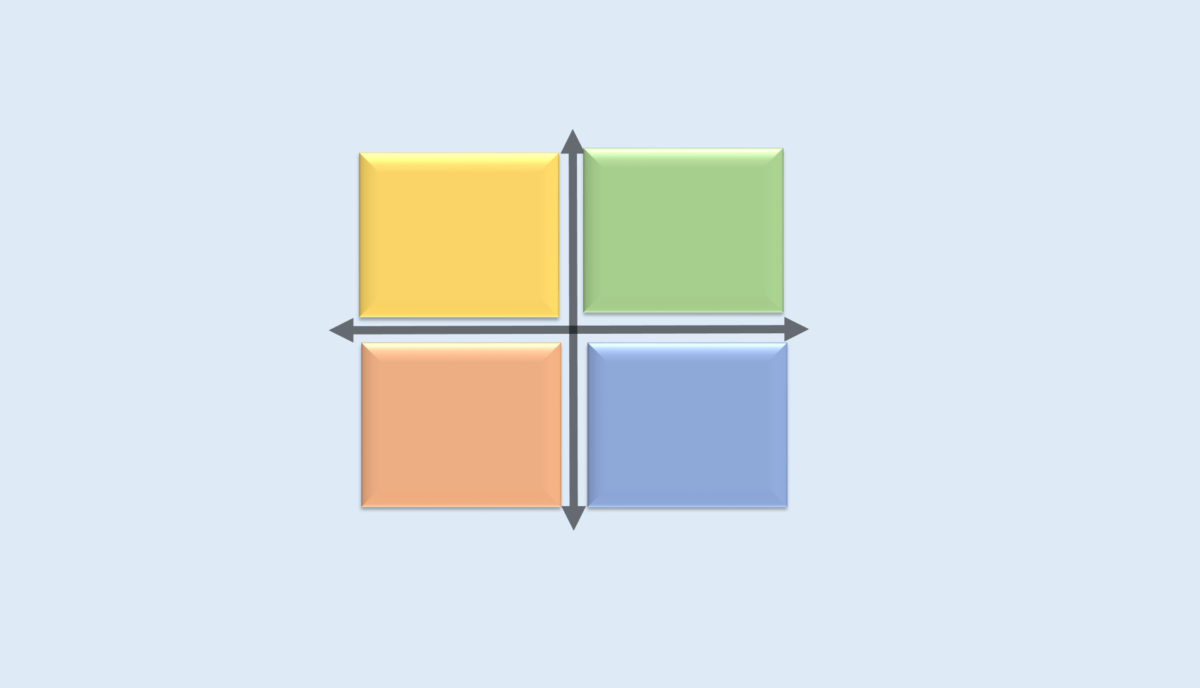In the world of project management and decision-making, finding ways to prioritize tasks and maximize efficiency is crucial. This is where the Impact Effort Matrix comes in. It is a powerful tool that allows you to assess and prioritize tasks based on their impact and effort required. Whether you are a project manager, team leader, or individual looking to streamline your workload, understanding and utilizing the Impact Effort Matrix can revolutionize the way you approach tasks. In this comprehensive guide, we will take you through the process of creating and using the Impact Effort Matrix, exploring its benefits and providing practical examples for its implementation. Get ready to unlock a tool that will not only help you make informed decisions, but also drive productivity and success in your personal and professional endeavors.
Impact Effort Matrix
It is also called as effort matrix, impact matrix, 2×2 matrix.
The Impact Effort Matrix serves as an advanced tool in root cause analysis (RCA) for effective action post-identification of root causes. In comparison to a simpler RCA tool like force field analysis, this matrix is tailored for the specific task of selecting the most practical solutions among many proposals. Additionally, it helps determine which solutions offer a combination of ease of implementation and maximum impact.
Components of the Impact Effort Matrix
- Assessing Tasks, Projects, and Ideas
- The Four Quadrants
Exploring the Quadrants
- Quick Wins: High Impact, Low Effort
- Major Projects: High Impact, High Effort
- Fillers: Low Impact, Low Effort
- Tasks to Avoid : Low Impact, High Effort
Importance of Impact Effort Matrix
- Prioritization and Allocation of Resources
- Informed Decision-Making and Workflow Streamlining
- Achieving Goals Efficiently
- It aids in categorizing tasks based on their impact and effort.
- It identifies “quick wins” (high impact, low effort) for motivation.
- It highlights tasks with high effort and low impact for re-evaluation.
- Encourages structured decision-making and enhances efficiency.
- Applicable in various scenarios, from project management to personal goals.
- A valuable tool for individuals and businesses, fostering better resource allocation and success.
Creating an Impact Effort Matrix

List Tasks or Projects
- To start, begin by making a comprehensive list of all the tasks, projects, or initiatives you want to assess. These can range from routine daily activities to larger, more strategic undertakings.
Evaluate Impact
- For each task or project, consider the potential impact it could have. Assess factors such as the benefits, outcomes, or results that may be achieved.
- Assign an impact rating to each task, using a scale like low, medium, or high, to indicate its potential impact.
Assess Effort
- Evaluate the effort required for each task or project, taking into account factors like the time, resources, and complexity involved.
- Assign an effort rating to each task, using a scale such as low, medium, or high, to denote the level of effort required.
Create the Matrix
- Plot the tasks or projects on a matrix with the impact rating on the x-axis and the effort rating on the y-axis. This will result in four distinct quadrants.
Interpret the Quadrants
- High Impact, Low Effort (Quick Wins): These are tasks that offer significant impact with minimal effort and should be prioritized.
- High Impact, High Effort (Major Projects): These tasks require substantial effort but promise substantial impact, warranting careful resource allocation and planning.
- Low Impact, Low Effort (Low Priority): Tasks that do not offer significant benefits and require minimal effort can be placed in this quadrant.
- Low Impact, High Effort (Not Worth Pursuing): Tasks or projects that demand significant effort but provide little return on investment can be considered for elimination or reduction.
Regularly Review and Update
- Keep in mind that the Impact Effort Matrix is a dynamic tool. As priorities shift or new tasks and projects emerge, revisit and adjust the matrix accordingly.
- Regular reviews ensure that you remain focused on tasks and projects that align with your goals and objectives, maximizing your impact.
Conclusion
In the realm of project management and decision-making, the Impact Effort Matrix is a dynamic tool that empowers individuals and businesses to make strategic choices and optimize resource allocation. By expertly categorizing tasks based on their impact and effort, it provides a roadmap to prioritize and streamline work efficiently.
For project managers, team leaders, or individuals, the Impact Effort Matrix transforms task management, helping turn objectives into reality. A versatile and impactful tool that ensures informed decisions and greater success in both personal and professional pursuits. It unlocks quick wins and aids in navigating complex projects, making it a gateway to achieving goals effectively.


